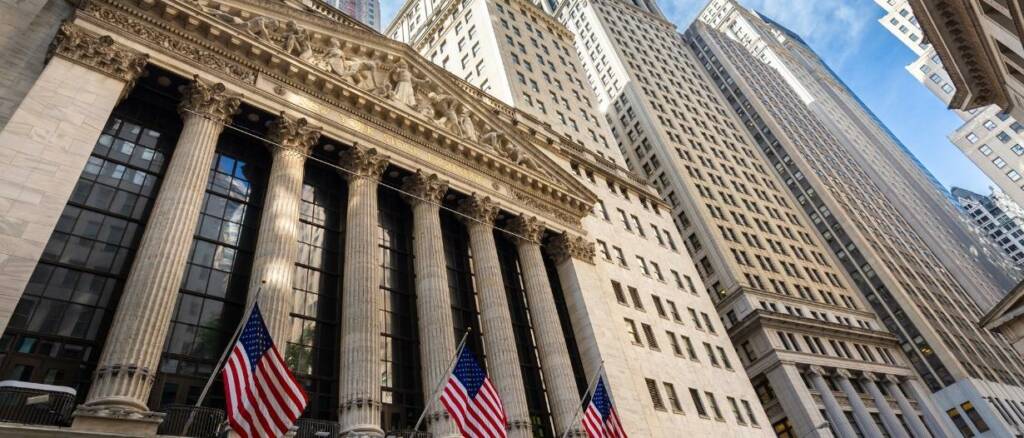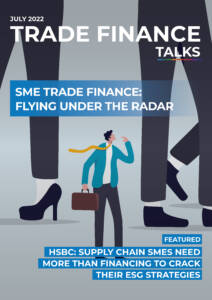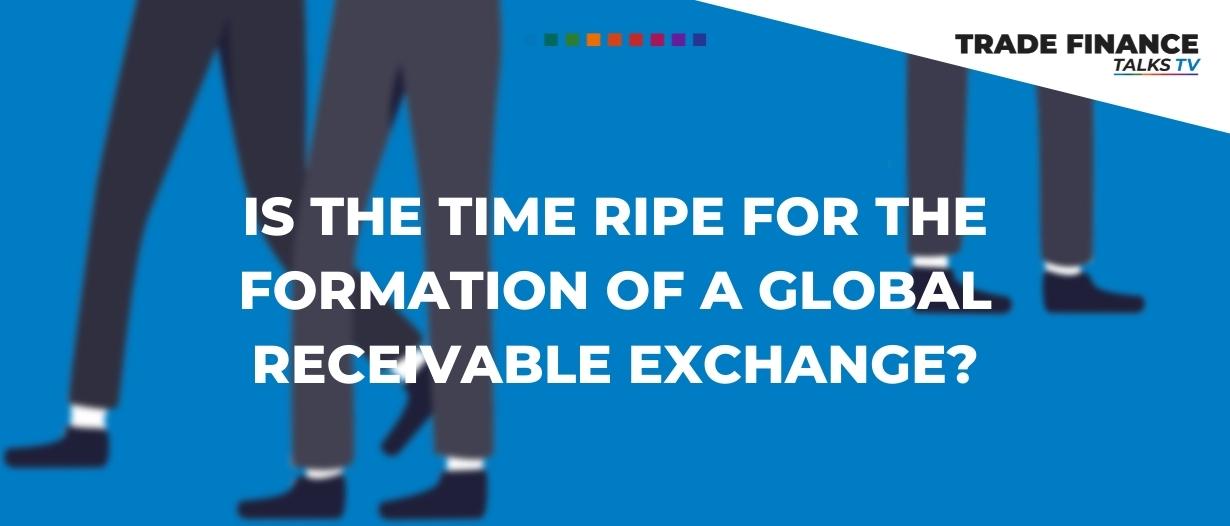In 2019, FCI formed a working group called “Receivables as an Investable Asset Class” (RIAC).
It was comprised of FCI members and companies who operate as funds supporting the factoring industry.
The working group was formed to debate the role FCI can play in supporting the creation of receivables finance marketplaces.
The initiative was originally formed under the auspices of the ICC Banking Committee with the heading “IITF workstream”.
New players in factoring
The factoring industry has grown in volume over the past 20 years from over $600 billion in 2001 to over $3.4 trillion in 2021.
As receivables finance (RF) increases globally, so have the liquidity needs of the financial players.
Banks have traditionally played the role of financiers to the factoring sector, but with the rise of fintechs and other third-party providers, new means of accessing alternative forms of funding via the capital markets are increasing.
Banks have historically played this role due to the secure nature of the industry and the sound controls factors use to reduce risks.
All types of investors are looking for ways to increase yield and safety, especially in the recent low-interest-rate environment.
Most recognise the fact that the RF market is considered low risk when executed properly.
These new players include distributors, hedge funds, insurance companies, and pension funds and they are looking at this asset class as a secure way to generate higher returns.
Bringing buyers and sellers together
FCI recognises the need to bring the market makers together and provide a platform that can match buyers (investors) and sellers (SMEs) in one marketplace where they can facilitate business transactions.
Today more non-bank players are interested in this initiative, especially as balance sheets are becoming more constrained and most players, including Banks and non-bank financial institutions (NBFIs), need a strong platform with effective rules and standards to follow.
In general, the innovators of future platforms are being driven by fintechs and other non-traditional players, not by the banks.
Over the past year, FCI has been in contact with a number of companies interested in partnering to offer the industry a global receivables exchange platform with the most robust technology available.
Many of the initiatives were based on three important and dynamic developments in our industry over the past two decades.

History of exchanges
There are a variety of exchanges worldwide that trade everything from stocks, bonds, and commodities to currencies and cryptocurrency.
Trading on an exchange, whether stock markets or derivatives exchanges, started as physical locations where trading took place.
Some of the best known include the New York Stock Exchange (NYSE), which was formed in 1792, and the Chicago Board of Trade (now part of the CME Group), which has been trading futures contracts since 1851.
Today there are more than a hundred stock and derivatives exchanges throughout the developed and developing world.
Exchanges, however, are more than just physical locations – they also set the institutional rules that govern trading and information flows about that trading.
They are closely linked to the clearing facilities through which post-trade activities are completed for securities and derivatives traded on the exchange.
An exchange centralises the communication of bid and offer prices to all direct market participants, who can respond by selling or buying at one of the quotes or by replying with a different quote.
When two parties reach an agreement, the price at which the transaction is executed is communicated throughout the market.
The result is a level playing field that allows any market participant to buy as low or sell as high as anyone else as long as the trader follows exchange rules.
Electronic exchanges
The advent of electronic trading has eliminated the need for exchanges to be physical.
Indeed, many traditional trading floors are closing and the communication of orders and executions are being conducted entirely electronically.
The London Stock Exchange and the NASDAQ are completely electronic, as is Eurex, the world’s second-largest futures exchange.
Many others, as they phase out floor trading, offer both floor and electronic trading.
The NYSE bought the electronic trading platform Archipelago as it moves increasingly toward electronic trading.
Derivatives exchanges such as the CME Group maintain both old-style pits and electronic trading.
Brazil’s BM&F maintained both until 2009.
The foreign exchange market
By far, the largest exchange is the foreign exchange market, which is larger than even the stock market, with a daily volume of $6.6 trillion.
The foreign exchange market (forex, FX, or currency market) is a global decentralised or over-the-counter (OTC) market for the trading of currencies.
This market determines foreign exchange rates for every currency and is unique because of the following characteristics:
- its huge trading volume, representing the largest asset class in the world;
- its geographical dispersion;
- its continuous operation: 24 hours a day except for weekends; and
- the variety of factors that affect exchange rates.
Largest stock market exchanges
The world’s stock market exchanges have a combined market cap of $89.5 trillion and the 10 largest stock markets represent nearly 80% of the global stock market value.
The top two—the NYSE and Nasdaq—capture 46% of the total, but while their amalgamated sum is massive, there are vast discrepancies between the value of each.
Rank Exchange Market Value
#1 NYSE $28.19T
#2 Nasdaq $12.98T
#3 Japan Exchange $5.37T
#4 Shanghai Exchange $4.92T
#5 HK Exchange $4.48T
#6 Euronext $3.85T
#7 Shenzhen Exchange $3.49T
#8 London Exchange $3.13T
#9 Saudi Exchange $2.15T
#10 TMX Group $1.97T
*Market capitalisations as of April 2020

Technologies driving the evolution of the capital markets
When you look at the history of the markets through the lens of technology, we have certainly come a long way.
We can travel back to the 1300s when Venetian money lenders sold debt issues to other lenders and individual investors carried the information with them on slates.
Trade (meaning, “path or course of conduct” and commerce (meaning, “together” and “merchandise) are ancient needs of human beings.
Today, with the evolution of technology, global capital markets are rapidly accelerating their digitalisation journey, leveraging the software-as-a-service (SaaS) model, as well as emerging technologies, including the cloud, machine learning, and artificial intelligence (AI).
Accelerating digitalisation
The pandemic that started in 2020 has only intensified this move toward digitisation.
Exchanges can now link together, expanding the number of transactions.
Exchanges all over the world are connected through systems that automatically enter an order placed on one exchange but executed on another.
While most people around the world know Nasdaq as the stock exchange group that operates exchanges in the US and across the Nordic and the Baltic regions, Nasdaq is also a major technology provider to other exchanges and financial institutions worldwide.
Nasdaq’s technology powers more than 2,300 companies in 50 countries that span the world’s financial industry, including capital markets infrastructure operators, market participants, banks, and regulators.
Plus, trading is no longer limited to daytime operations.
It is a 24-hour open for business exchange.
The newest entrant to global exchanges has been cryptocurrency exchanges using blockchain technology.
While Bitcoin is the name we all hear about, there are other industries adapting blockchain to facilitate trade and foster integrity, security, and speed amongst the users.
The Receivables Exchange, United States
The idea of creating an electronic auction marketplace for investors to purchase receivables was something quite novel back at the turn of the century when The Receivables Exchange was the first to design an invoice auction exchange platform in the US.
Small and medium enterprises (SMEs) gained access to working capital by auctioning invoices to a global network of institutional buyers who competed to buy receivables via a real-time marketplace.
These sellers controlled all of the pricing parameters, setting the minimum advance rates they were willing to accept and the maximum fee they were willing to pay.
Investors, known as buyers (including banks, hedge funds, asset-based lenders, and family offices) competed in real-time to purchase these assets.
The concept was an alternative to traditional factoring as we know it today.
The best bid that met the seller’s parameters won the auction.
Although it had all the hallmarks of a great strategy, due to its initial focus on SMEs it suffered from fraud, dilution, and other risk issues.
When NYSE Euronext acquired a minority stake in it back in 2011, the business was split in two.
One focused on “Corporate Receivables Programs” – which were large corporate receivables purchase programs that targeted sellers in the Fortune 1000 space – while the other was a joint venture with Ariba that focused on supporting only SMEs (the latter never flourished and was later shuttered).
The business with the NYSE never fully blossomed and on 1 January 2016, had been rebranded under the Receivables Exchange name and was later taken over by LiquidX focusing on the large corporate segment that is still active today.
NAFINSA, Mexico
The Nacional Financiera (NAFINSA) was created in 1934 in Mexico.
It is one of four development banks in Mexico and launched its supply chain finance/reverse factoring program called Productive Chains, which has become one of the most important programs in Mexico supporting SMEs.
One of the key traits explaining the success of the Productive Chains program is its innovative reliance on an electronic platform, which made it extremely user-friendly for potential supplies to factor their invoices.
Given the challenges in Mexico´s financial market, supplier credit is one of the main sources of credit for private firms to finance their current operations.
In this regard, Productive Chains successfully tackled a key weakness of the financial system in Mexico, achieving great effectiveness and efficiency.
Today both large companies and government entities participate in the program, many of which invite their suppliers (whether SMEs or individual entrepreneurs) to participate as well.
Membership offers attractive financing options to its participants, and the key instrument is the innovative technological platform for immediate, electronic factoring.
Through very simple and transparent procedures, it allows SME suppliers in any such designated Productive Chain to rapidly obtain financing by discounting their receivables.
This so-called “reverse factoring” scheme differs from that of traditional factoring because it targets a select group of MSMEs associated with the supply chain of large companies of renowned strength and solvency.
The participating anchor corporate buyers are chosen on the basis of high standards in terms of business strength in order to reduce the risk of loss to the financial institution.
Trade Receivable e-Discounting System (TREDS), India
In 2008, the Financial Sector Reforms (FSR) Committee first recommended the concept of a receivables exchange in India through their report “Hundred Small Steps”.
A platform was established, whereby credit exposure was backed by large anchor buyers (corporates), who offered confirmed invoices of their SME suppliers for discounting.
The platform was based originally on another highly successful reverse factoring/confirming model in Mexico created by NAFINSA, a Mexican development bank.
In 2014, the Reserve Bank of India (RBI) issued guidelines on the TREDS platform to focus solely on domestic receivables business via a traditional factoring model.
Today, the platform generates approximately $500 million in domestic receivables volume per month.
Based on this success story, the Government of India launched the ITFS to create a similar auction marketplace for exporters and importers to obtain financing from multiple financiers at competitive pricing.
The platform will also enable financiers (such as banks, financial institutions, and factors) to expand their reach to exporters and importers without needing an on-the-ground presence in the regions where they are present.
Next Iteration
FCI is in discussions with various investors, mostly located in Asia, that are interested in the creation of receivable exchanges.
We believe the market is ripe for their evolution as intermediaries to support both large corporates and SME suppliers.
The benefits to FCI members would be significant.
The platform would provide greater reach across geographies for import factors to offer debtor underwriting/credit protection services.
Export factors would have increased access to a larger piece of the pie, especially those who are not restricted geographically, by:
- providing financing to exporters without taking up large exposures (based on the invoice by invoice auction process),
- increasing the basket of financing products in due course including traditional and reverse factoring, and
- creating a digital KYC process and AML checks on business activities.
Market uncertainty
We know that banks are decreasing their exposure in correspondent banking, not increasing.
Credit insurance has its own set of complications, and the rating agencies’ wrap issue is a question mark.
We are also seeing issues like accounting treatment and transparency issues relating to reverse factoring programs being debated, although the large accounting bodies like the IFRS and FASB are attempting to answer some of these questions.
This creates uncertainty and insecurity in our industry, the pillars of any successful capital market.

Role of blockchain in an exchange
This takes us to the issue of fraud.
The risk of another Greensill arising is mitigated as this concept of an open auction marketplace with buyers matching sellers against real and actual invoices reduces the risk of fraud considerably.
Of course, the natural direction of such a marketplace would best be served by distributed ledger technology (DLT), a decentralised ledger that records every transaction that takes place on it.
Once this data is stored, it cannot be modified by a third party.
This type of ledger is a paradigm shift for the factoring industry as it increases trust, security, and transparency.
Inherent in the ledger is the traceability of data shared across the marketplace.
One can easily start to see that fraud, such as the Greensill incident, would be unable to thrive in such an environment.
This type of financial accounting offers up efficiencies and cost savings while ensuring the integrity of the transactions.
Other examples of blockchain in practice
Blockchain applications go far beyond cryptocurrency and bitcoin.
With its ability to create more transparency and fairness while also saving businesses time and money, the technology is impacting a variety of sectors in ways that range from how contracts are enforced to making government work more efficiently.
There are dozens of examples of real-world blockchain use cases for this pragmatic, yet revolutionary technology.
Some of these examples of blockchain applications today include:
- Secure sharing of medical data
- NFT marketplaces
- Music royalties tracking
- Cross-border payments
- Real-time IoT operating systems
- Personal identity security
- Anti-money laundering tracking system
- Supply chain and logistics monitoring
- Voting mechanism
- Advertising insights
- Original content creation
- Cryptocurrency exchange
- Real estate processing platform
On 28 January 2022, the SEC approved the first stock exchange to use blockchain technology.
The BSTX exchange won approval to use blockchain technology to fuel key aspects of stock trading.
Looking ahead
As we know there exists today a $1.7 trillion trade finance gap globally.
A large portion of this is receivables based, but certainly, with the development of exchanges, a significant amount of this gap can be realised.
The RIAC working group started at the beginning by defining the need for bringing the capital markets and the factoring industry together.
Unfortunately, it was rather apparent that both sides have not evolved enough to effectively come together to manage this significant opportunity, especially in the receivables space.
We have witnessed some unique new entrants who have tried but failed.
Again no better example can be cited than the Greensill case, which showed all of us what can go wrong when an industry bends the rules and manipulates well-founded structures that have been in place for well over a century.
This is a warning sign to those investors and other arms-length funds when proper due diligence fails.
We know that those who get it right are aware of what is happening underneath the hood of their car, but those who do not will be subject to operational, concentration, dilution, fraud, and other risks!
The other stark observation is the role rating agencies played, placing strong investment ratings on a structure that was in essence a house of cards.
Let’s be honest, Greensill became the darling of Wall Street, businesses, and governments alike, a catastrophe in the making.
Not coincidentally, there were many scratching their heads about the abuses that can take place in the receivables finance market.
The role of the FCI and RIAC working group
This RIAC working group was formed in the shadow of this story, in part to debate the role that FCI and the industry can play in supporting the creation of well-functioning capital markets that are aligned with the factoring and receivables finance community.
Investors want confidence and certainty in the asset class including a high level of trust.
So, the question is, what kind of format/structure should an investor use?
Do we rely on a model similar to the Credit Suisse/Greensill example?
Highly doubtful.
Credit Suisse under new management has all but abandoned this business model after carefully examining the numerous errors in judgement it made when looking under the hood of its own car!
Also, the issue of multiple legal jurisdictions bedevils most in the space.
The necessity of getting this right is paramount.
Without it, we can never truly achieve the formation of a single uniform receivables exchange.
The challenge for us is still how to create some kind of rule book but this will take time.
A global receivable exchange
During the recent 54th FCI annual meeting held in Washington DC last month, we invited a handful of Fintechs from Asia to the US capitol to provide insight on their efforts to develop a modern exchange for this asset class.
Amit Agarwal, head of open account at DBS Singapore and a member of the FCI executive committee, led the effort and moderated a panel on the discussion about the future of technology in the factoring space.
Nearly every significant asset class has its own specialised exchange, whether it be in stocks, currencies, soft or hard commodities, or the like.
Is it not time that the receivables finance industry, which when taken together in all of its parts well exceeds $5 trillion in volume, should be evolving towards the creation of its own exchange?
With the aftermath of a very challenging environment for the industry stemming from the recent great recession and the pandemic, especially those non-bank financial institutions trying to raise new sources of capital during these times of upheaval, and coupled with the continuous dark clouds on the horizon, is it not evident that the time bodes well for the launch of receivables exchanges around the world?
Read the latest issue of Trade Finance Talks, July 2022
























